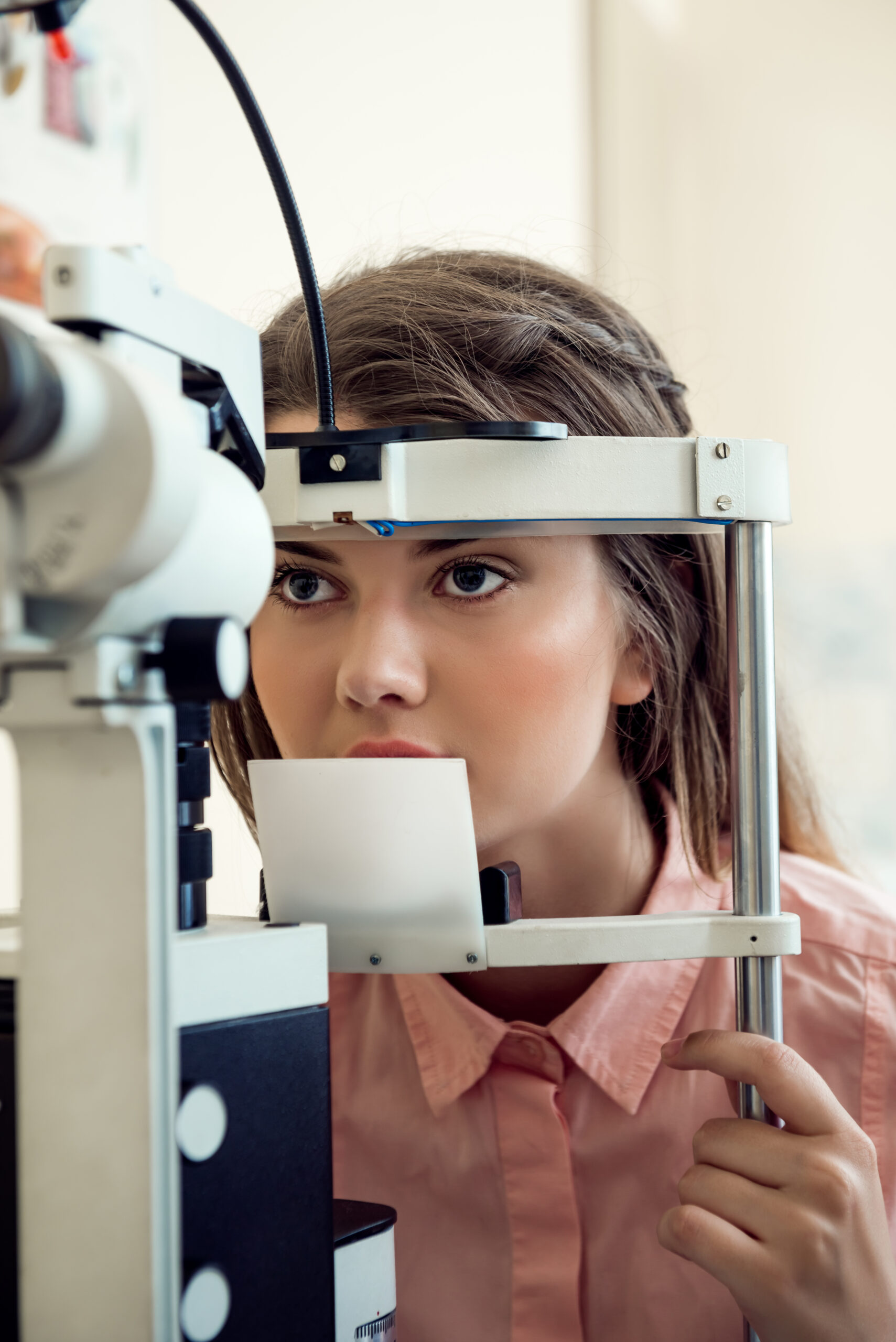Keratoconus
Home
Keratoconus
Keratoconus Treatment in Bengaluru – CXL, Intacs & Corneal Surgery
Are you struggling with blurry or distorted vision that glasses no longer seem to correct? You might be dealing with Keratoconus, a progressive eye condition that affects the cornea’s shape and clarity. Early diagnosis and effective treatment are crucial to preserving vision and avoiding severe complications. This guide explores everything you need to know about Keratoconus treatment in Bengaluru — including causes, symptoms, stages, advanced procedures like Corneal Collagen Cross-Linking (CXL), Intacs, and Corneal Surgery, along with lifestyle tips and specialist care options.
What is Keratoconus?
Keratoconus is a degenerative eye disorder where the cornea — the clear, dome-shaped front part of the eye — thins and bulges outward into a cone-like shape. This irregular shape prevents light from focusing properly on the retina, leading to:
- Blurred vision
- Distorted images
- Increased sensitivity to light and glare
- Frequent changes in eyeglass prescription

Causes of Keratoconus
While the exact cause remains unclear, multiple risk factors contribute to its development:
Genetic Factors
- Family history of keratoconus increases the risk.
- Certain gene mutations are linked with corneal thinning.
Eye Rubbing
- Chronic, forceful eye rubbing is a major risk factor.
- Often seen in patients with allergies or itchy eyes.
Medical Conditions
- Linked with connective tissue disorders (like Marfan’s or Ehlers-Danlos).
- Common in individuals with Down syndrome.
Environmental Factors
- Long-term UV exposure may damage corneal tissue.
- Poorly managed allergies or eye irritation worsen progression.
Benefits of Early & Advanced Treatments
- Prevents progression to blindness
- Reduces need for corneal transplant if detected early
- Restores functional vision with advanced techniques
- Improves quality of life and independence
Stages of Keratoconus
- Mild Stage – Slight corneal thinning, vision corrected with glasses or soft lenses.
- Moderate Stage – Increased irregular astigmatism, requiring rigid gas-permeable lenses.
- Advanced Stage – Severe corneal distortion, intolerance to lenses, vision deteriorates.
- End-Stage Keratoconus – Corneal scarring and thinning requiring corneal transplantation.
Specialists for Keratoconus Treatment
For comprehensive care, you may need a team of experts:
- Corneal Specialists – Diagnose and recommend surgical treatments like CXL or corneal transplant.
- Optometrists – Fit specialized lenses like scleral or hybrid lenses.
- Ophthalmic Surgeons – Perform advanced corneal surgeries when needed.
Treatment & Management of Keratoconus
There is no permanent “cure,” but treatments can stop progression, improve vision, and reduce complications.
1. Eyeglasses & Contact Lenses
- Glasses: Useful in early stages.
- Rigid Gas Permeable (RGP) Lenses: Provide clearer vision by reshaping how light enters the eye.
- Scleral & Hybrid Lenses: Comfortable for advanced cases, vault over the cornea and rest on the sclera.
2. Corneal Collagen Cross-Linking (CXL)
- A breakthrough treatment that strengthens corneal tissue.
- Uses riboflavin (vitamin B2) drops + UV light.
- Slows or halts progression in most patients.
- Minimally invasive and performed as an outpatient procedure.
3. Intacs (Intracorneal Ring Segments)
- Small plastic inserts placed within the cornea.
- Flatten the cone shape and improve vision.
- Often used for moderate keratoconus when lenses no longer help.
4. Corneal Surgery
- Deep Anterior Lamellar Keratoplasty (DALK): Preserves part of the cornea while replacing the diseased layer.
- Penetrating Keratoplasty (PK): Full corneal transplant in severe cases.
- High success rate but requires long recovery.
5. Advanced Lenses Post-Surgery
After surgical treatments, patients may still need glasses or lenses, but vision typically improves significantly.
Lifestyle & Self-Care Tips
- Avoid eye rubbing – Can worsen thinning and accelerate progression.
- Manage allergies – Use prescribed drops to reduce itching.
- Protect from UV rays – Wear sunglasses outdoors.
- Follow-up regularly – Annual or biannual eye checkups are essential.
- Stay hydrated & eat eye-healthy foods – Include omega-3s, vitamin C, and antioxidants.
FAQ
Keratoconus is a progressive eye condition where the normally dome-shaped cornea thins and bulges into a cone-like shape. This distortion leads to blurred or distorted vision and can cause light sensitivity and glare.
Common symptoms include:
- Blurred or distorted vision
- Increased sensitivity to light and glare
- Frequent changes in glasses prescription
- Difficulty seeing at night
- Eye strain or discomfort
The exact cause is unknown, but it is believed to involve genetic and environmental factors. Family history, excessive eye rubbing, and certain systemic conditions may increase the risk.
Not always. Many individuals can manage the condition with glasses or contact lenses, especially in the early stages. Surgical options are considered when the condition progresses and other treatments are ineffective.
While the exact cause is unknown, the following practices may help:
- Avoiding eye rubbing
- Regular eye check-ups
- Using prescribed corrective lenses
- Considering early intervention therapies like corneal cross-linking
For personalized care and treatment options, you can consult with specialists at Healing Earth Ayurveda in Bengaluru. They offer a combination of modern and traditional therapies tailored to individual needs.
